Shishi Sacred Heart Cathedral
Guangzhou Shishi Sacred Heart Cathedral is located in Yide Road, Guangzhou city center. Sacred Heart Cathedral was named Sacred Heart Cathedral because it was officially laid on Sacred Heart Day on June 18, 1863. Built in 25 years, it is the most magnificent and characteristic Cathedral in the Catholic parish of Guangzhou. The Sacred Heart Cathedral is designed by French designers and built by Chinese craftsmen.
The total area of the church is 2754 square meters, 35 meters wide in East and west, 78.69 meters long in North and south, 58.5 meters high from the ground to the spire. The Stone Chamber Sacred Heart Cathedral was founded in 1861 at a cost of 400,000 francs, which is comparable to Notre Dame's Cathedral in Paris, France. It is the largest cathedral in the Catholic Diocese of Guangzhou, one of the most magnificent Gothic double-spired buildings in China, the largest stone-structured Catholic building in Southeast Asia, and one of the four All-stone Gothic church buildings in the world (the other three are Notre Dame in Paris, Westminster Cathedral, Cologne Cathedral), because of the whole cathedral. The walls and pillars are made of granite, so they are also called "Stone Chamber" or "Stone Chamber of the Holy Heart of Jesus" or "Stone Chamber Catholic Church". In 1996, it was declared the national key cultural relics protection unit. It is a key cultural relic protection unit in Guangdong province.
In 1856, when the Second Opium War broke out, the Anglo-French Allied Forces captured Guangzhou and leveled the governor's office in Guangzhou and Guangzhou. At that time, the missionary's inscription of "Pope Supervisor Pastoral" in Guangzhou and Guangzhou, appointed by the Holy See, looked at the foundation of the governor's office in Guangzhou and Guangzhou, which had been leveled, and demanded that a church be built for him, but the governor of Guangzhou and Guangzhou, Lao Chongguang, In 1861, the unequal treaties between China and France stipulated that the French would build their own chapel schools at the ports of trade.
Ming Chai once returned to France to see Napoleon, emperor of France, for 500 thousand francs. The excavation of Sacred Heart Cathedral began on August 26, 1861, and a grand foundation laying ceremony was held on December 8, 1863. The Ming Dynasty inscriptions also sent a kilogram of earth from Rome and Jerusalem to express that Catholicism was founded in East Jerusalem and rose in West Rome. The lettering "JERUSALEM 1863" in the east corner and "ROME 1863" in the west corner are still visible.
In 1864 the French Church invited two architects, VONUTRIN and HUMBERT, to emulate the design of St. Claudius in Paris. By the time the church was completed in 1888, Cai Xiao had turned into a more than 50 year old man from his 20s. But this is a relatively short time to build the church, Notre Dame in Paris was built 87 years, and the German Church of Cologne was built for seven centuries to complete.
The stone chambers have undergone two major damage:
During the First Anti-Japanese War, a Japanese plane hit a lightning rod on a spire, hit a teahouse in the sea in front of the church, and exploded, shattering part of the Napoleonic stained glass.
The second was subversive destruction. During the Cultural Revolution, the stone chambers were badly destroyed, all religious paintings torn down, the rest of the post-war Napoleonic stained glass shattered, flower windows shattered, all scriptures and sermons piled up on kneeling benches into hills and burned in churches, stone walls and stones. The column was burned and burst, and it had been repaired several times, but there were still burning marks. The lion head drain on the roof was broken by hammers, which was once a garbage disposal site during the cultural revolution. In July 1979, the municipal government re implemented the policy of religious belief and began to prepare for the re opening of the stone chamber. Believers live in normal religious life, and believers and tourists from all over the world visit the stone houses.
After the completion of the Sacred Heart Cathedral, there were three major repairs.
The first time was in the 1920s, the stone chamber roof and beams, East and West Tower stairs and other wooden structures were all converted into reinforced concrete structures.
The second was in the 1980s, when the State Council Religious Affairs Bureau (State Religious Affairs Bureau) allocated 150,000 yuan to repair the church. However, due to long-term wind and rain, rain leakage and long-term disrepair, the church again scarred, some of the structure and components seriously damaged.
In July 2004, the third major overhaul of Shishi church was completed and reopened in the autumn of 2006. The overhaul cost up to 20 million yuan. Before the overhaul, the stone chamber church could only use some ordinary glass instead of flower windows. One of the main tasks of the restoration was to replace all 98 special glass made from the Philippines. These glass were "gold for price" and cost 4.3 million yuan for 700 square meters. The glass images, based on the stories and representatives in the Old Testament and the New Testament, depict about 60 biblical stories, including the birth of Jesus, the baptism of Jesus and the Last Supper. In the overhaul, the church has reinstalled the mechanical clock and is now in operation. In addition, the church's staircases, channels, girders are renovated, internal and external wall granite renovated by hand cleaning, repair stone pillars, ceiling, altar, kiosk, chanting tower, lighting lines, lighting and other indoor configuration.
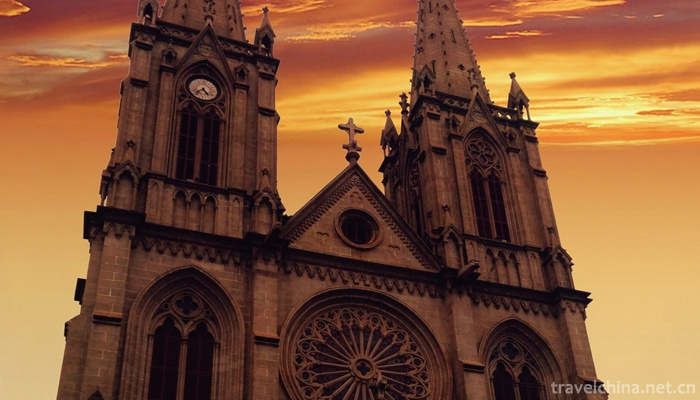
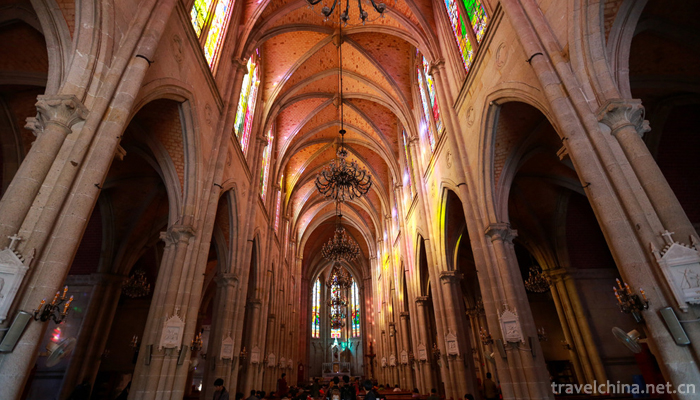
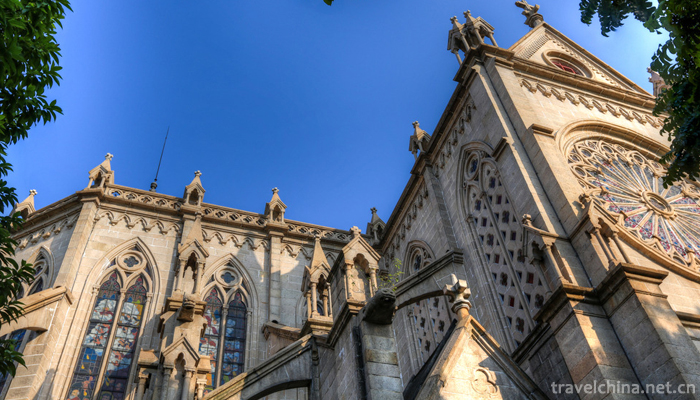
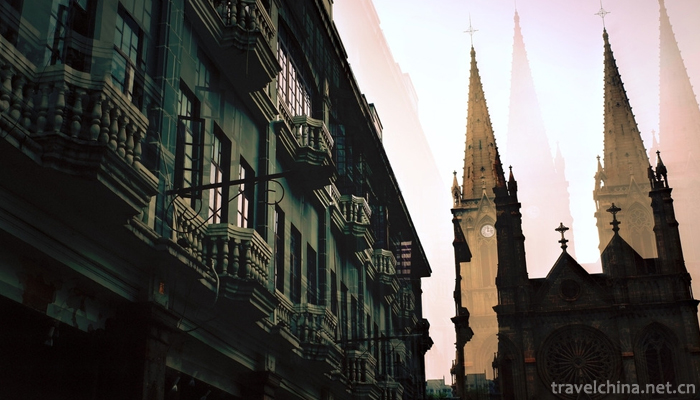
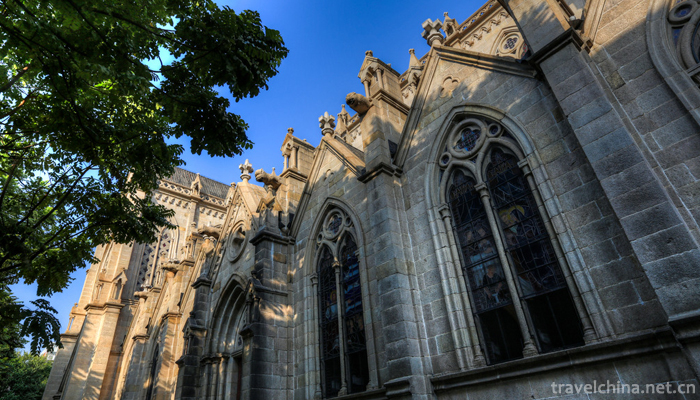
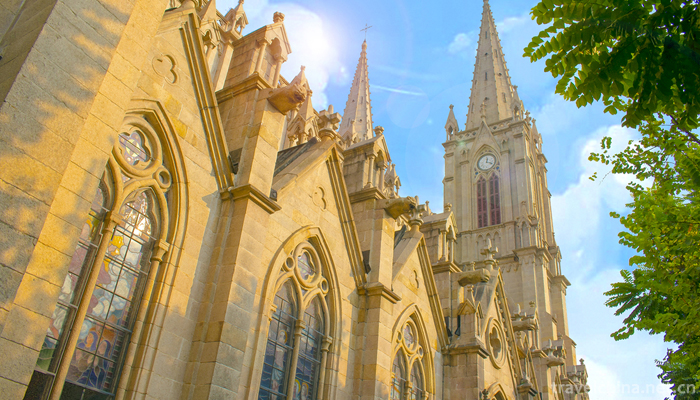
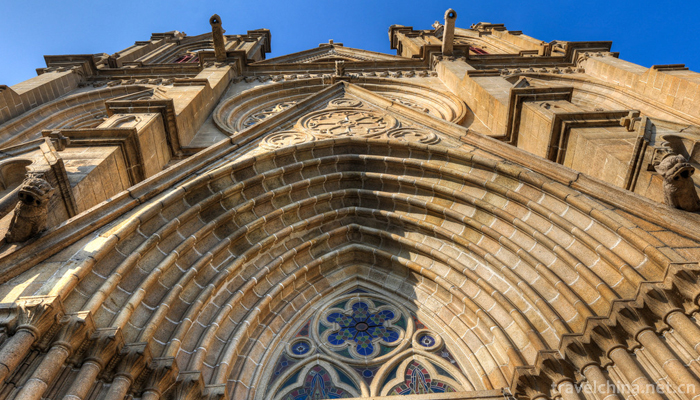
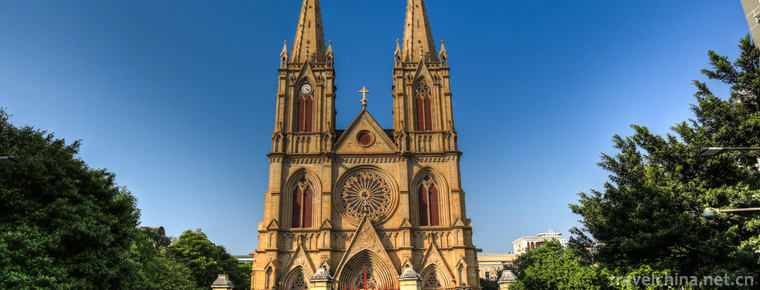
-
1.Tengchong Volcanic Hot Sea Tourist Area
The volcanic hot sea is located 20 kilometers southwest of Tengchong County. It covers an area of 9 square kilometers. There are more than 80 large gas springs and hot springs. Among them
Time 2018-12-12 -
2.Eight Zhai ditch
Bazhaigou, located in Dongli Village, Guitai Town, the hinterland of 100,000 mountains, more than 50 kilometers northwest of Qinbei District, Qinzhou, Guangxi Zhuang Autonomous Region
Time 2018-12-24 -
3.Package Park
Baoyuan, or Baoyuan for short, is located at 72 Wuhu Road, Hefei City, Anhui Province. It was built in 1063, the seventh year of Jiayou in the Northern Song Dynasty. It was built in memory of Baozheng
Time 2018-12-26 -
4.Maoling Museum
Maoling Museum is located on the Wuling Platform between Xianyang and Xingping in Shaanxi Province, about 40 kilometers away from Xi'an. It is a Museum of Dynastic History of the Western Han Dynasty
Time 2019-02-07 -
5.mount yi
Yashan, also known as "Zou Yashan", "Zou Shan", "Dong Shan", is one of the nine famous historical and cultural mountains in ancient China at an altitude of 582.8 meters.
Time 2019-03-04 -
6.Kazakhstan 62 Kwohner
Kazakhstan 62 Kwohner 62 Kwohner is Kazakh folk classical music, which means "62 suites". It is a comprehensive art mainly composed of instrumental music, accompanied by folk songs, dances,
Time 2019-05-02 -
7.bir bala
Kazakh is a music-loving nation, known as "horses and songs are the wings of Kazakhstan". Folk songs play a very important role in Kazakh music. Where there is a felt room of Kazakh people,
Time 2019-05-02 -
8.Lu Brocade Weaving Techniques
Lujin brocade weaving technology, traditional handmade brocade weaving technology in Juancheng County, Shandong Province, is one of the national intangible cultural heritage.
Time 2019-05-15 -
9.Panhu Legend
Panhu and Xinnu myths and legends are abbreviated as Panhu legends. They originated in Luxi County, Xiangxi Tujia and Miao Autonomous Prefecture, Hunan Province. They are the main contents of Panhu cu
Time 2019-06-08 -
10.The Yi Nationality Plays Songs
The dance of the Yi nationality is colorful and varied. It is typical of the simple collective dance "Da Song" (also known as "Ta Song") with the entertainment of the masses. In Mi
Time 2019-07-12 -
11.Genghis Khan Cheng Ji Si Han
He was a Jin Jin. He was from May 31, 1162 to August 25, 1227. Yeke Mongghol Ulus Khan, outstanding in world history. Politician , Militarist
Time 2019-09-07 -
12.Chengdu Weiran flower sea
Weiran flower sea is the largest flower sightseeing base in Chengdu, the top 50 rural tourism base in Chengdu, the most beautiful flower appreciation base in Chengdu, Chengdu music industry base, top
Time 2020-04-10